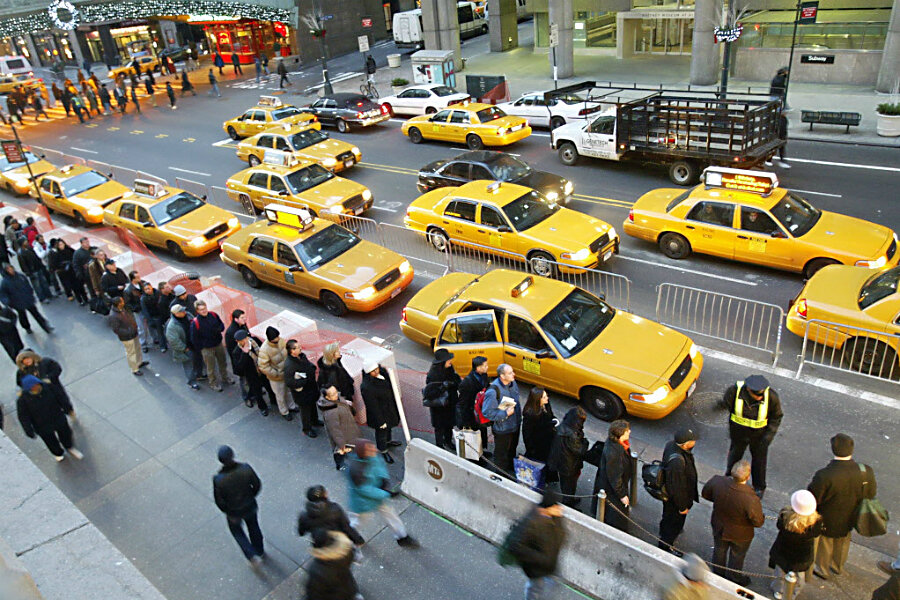How did Uber come to outnumber NYC's Yellow taxis?
For the first time, New York's famed yellow cabs are outnumbered by Uber black cars on the streets of the Big Apple.
Released on Friday, the latest numbers from the New York City Taxi and Limousine Commission put the number of "For Hire Vehicles" (FHVs) or Ubers at 14,088, as opposed to nearly 13,600 taxis.
Though it may seem that this is an indication of the mobile app further eroding what is left of the traditional taxi industry, these numbers, taken by themselves, are misleading. According to the Associated Press, there are nearly 440,000 rides taken in yellow cabs in New York every day. This drastically outpaces the Uber's ridership in the city, which is less than a tenth of that, making somewhere between 20,000 to 30,000 rides a day.
As the AP notes, Uber drivers often own their own cars, and work less than 40 hours a week ride-sharing. By contrast, taxis are owned by cab companies and often have more than one driver assigned to a specific vehicle and are on the road for virtually 24 hours a day.
"Yellow cab rides significantly outstrip the number of black car rides," Meera Joshi, chairwoman of the taxi commission, told the AP. "So the number of their affiliated vehicles in and of itself doesn't paint a complete picture."
Uber's employment model has drawn fire from taxicab companies and labor activists worldwide. Bhairavi Desai, executive director of the New York Taxi Workers Alliance, told the AP that Uber has increased supply to the point of suppressing wages for all drivers, cab, Uber, and livery alike.
Robert Reich, who served as Secretary of Labor under President Clinton from 1993 to 1997, sees Uber's rapid growth as an example of inequality generated by the so-called sharing economy
New software technologies are allowing almost any job to be divided up into discrete tasks that can be parceled out to workers when they’re needed, with pay determined by demand for that particular job at that particular moment.
Customers and workers are matched online. Workers are rated on quality and reliability.
The big money goes to the corporations that own the software. The scraps go to the on-demand workers.
Unlike taxicab owners, Uber's drivers are not required to purchase medallions from the city to operate legally. The price of a medallion is falling under pressure from Uber, the New York Times reports, but is still a whopping $872,000 on average.
Most taxi drivers do not own their vehicles, which means that they start their shifts in the red with a fee they owe to the cab company.
Priceonomics argues that New York's medallion system has created numerous unintended consequences, the most glaring of these being that it creates artificial scarcity. In 1937 when the system was introduced, there were 11,387 medallions issued in New York, compared to the nearly 13,600 today.









